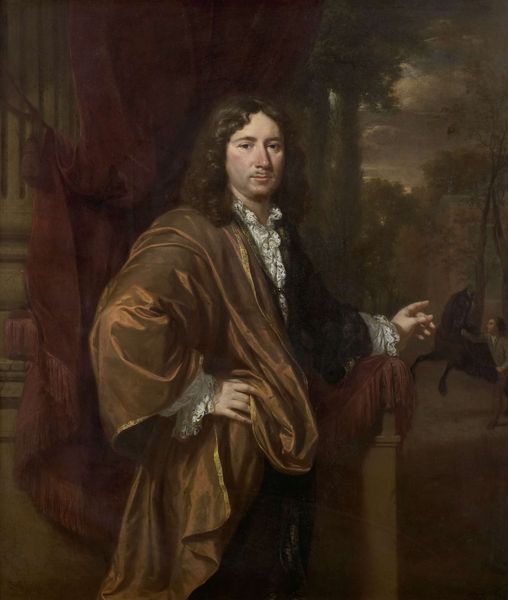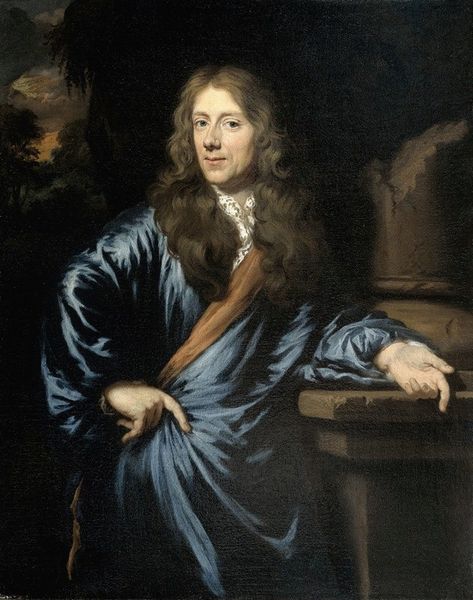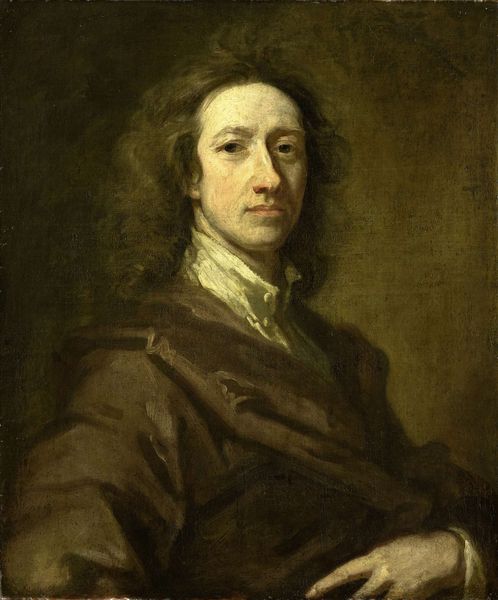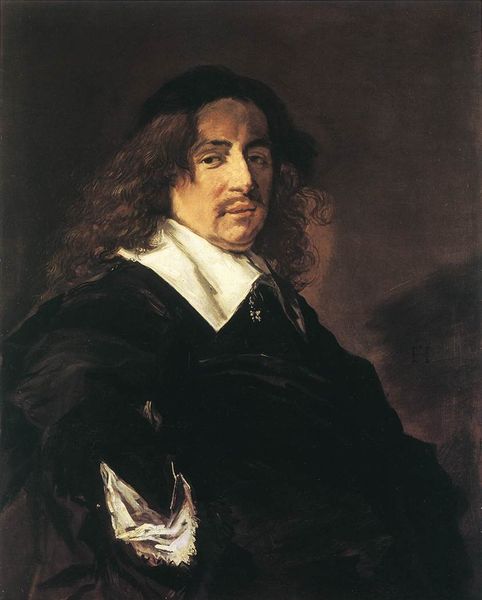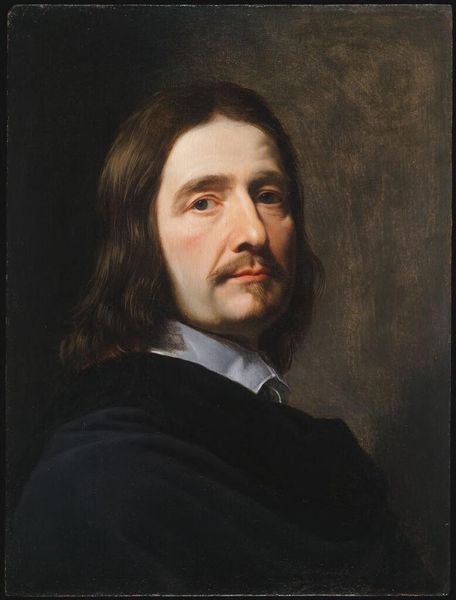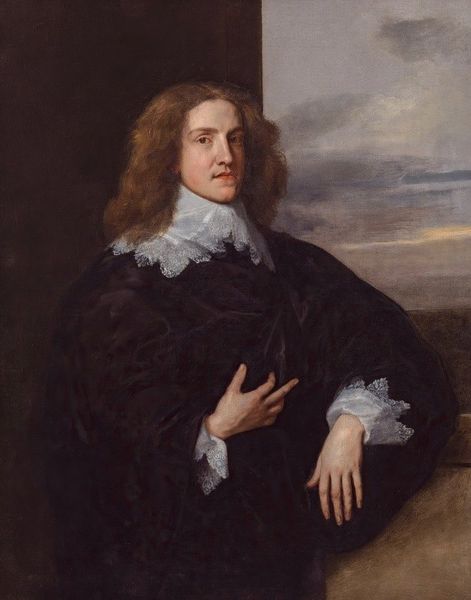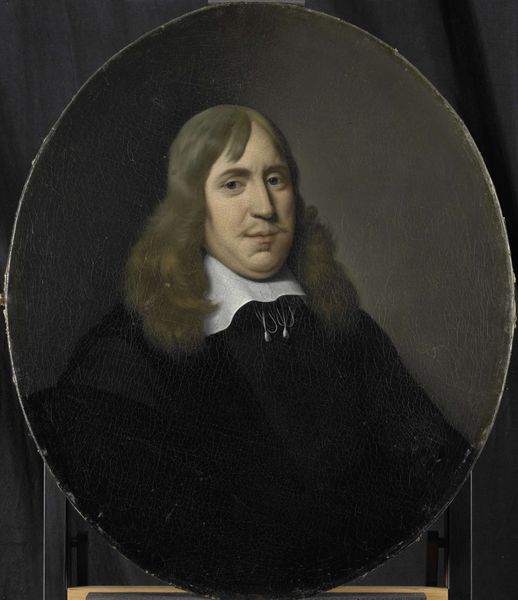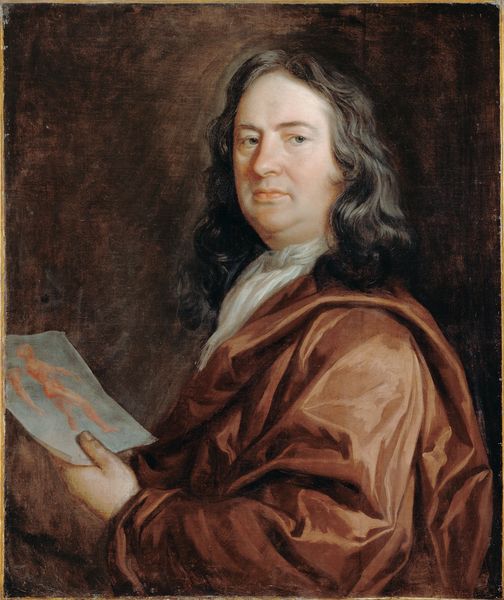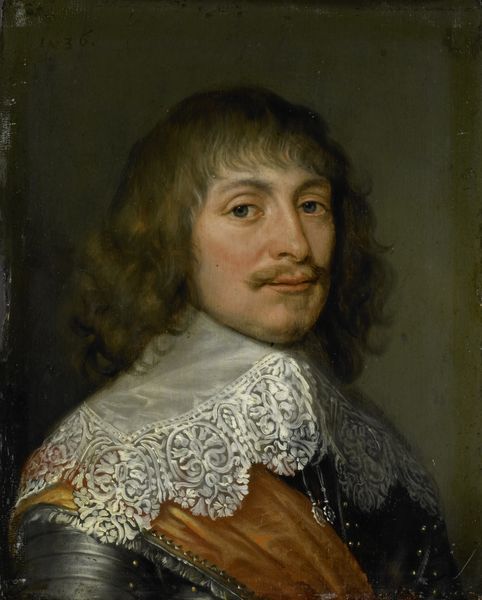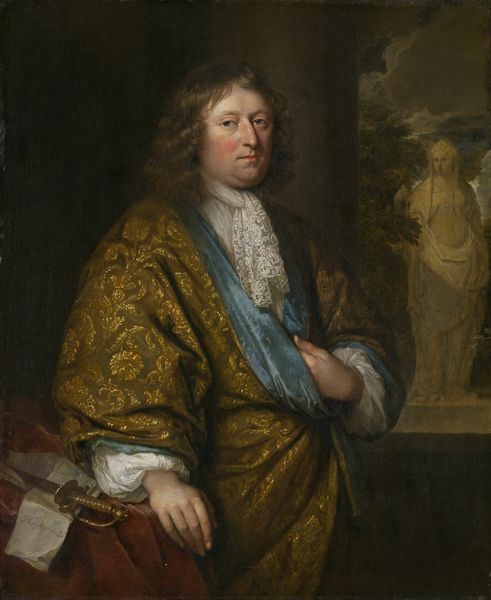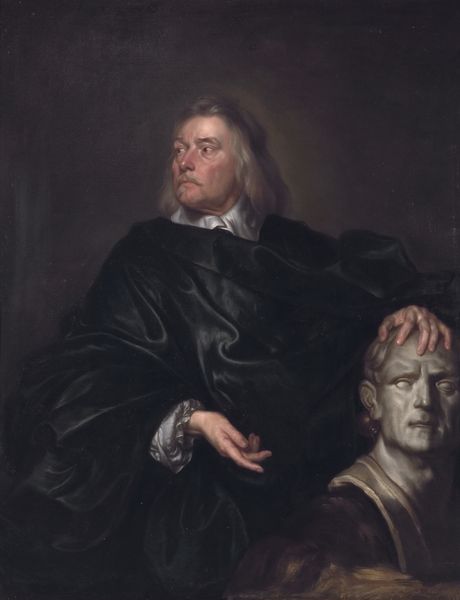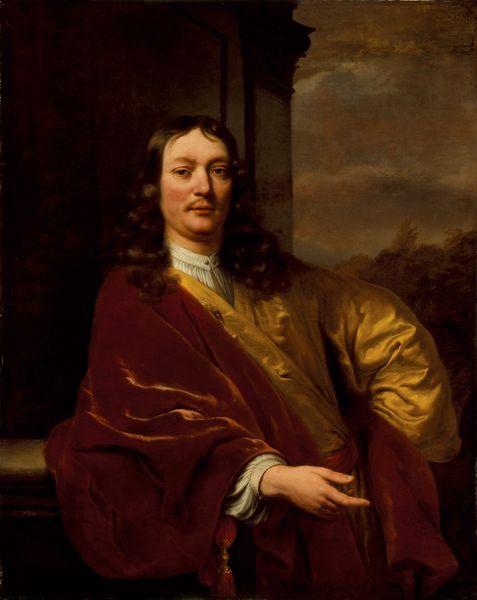
Dimensions: support: 939 x 1149 mm frame: 1162 x 1375 x 105 mm
Copyright: CC-BY-NC-ND 4.0 DEED, Photo: Tate
Curator: Gilbert Soest, a German painter active in England, likely painted this portrait of Sir Thomas Tipping. The landscape elements feel so theatrical. Editor: It's heavy. The dark, lustrous fabric of the sitter's cloak looks almost impenetrable, a statement of wealth achieved through colonial trade. Curator: Absolutely. The sheen on that fabric speaks volumes about global exchange and power dynamics of the time. We need to consider the source of the pigments, the labor involved. Editor: And the dog. It is there as a symbol of the sitter's status, a hunting companion. It's also been brought into this sphere of darkness. Curator: The dog's vulnerability is palpable, and the man's slight touch reads as ownership, not affection. This portrait is more than just a likeness; it's a study of a particular kind of masculine authority. Editor: There's a grimness here. It makes you question the cost of such displays. Curator: Indeed. A discomfort we must grapple with.
Comments
tate 7 months ago
⋮
http://www.tate.org.uk/art/artworks/soest-portrait-of-a-gentleman-with-a-dog-probably-sir-thomas-tipping-t04162
Join the conversation
Join millions of artists and users on Artera today and experience the ultimate creative platform.
tate 7 months ago
⋮
As the political climate changed with the demise of the Commonwealth in the late 1650s, many people had to realign their allegiances to the restored monarchy to ensure their survival. Sir Thomas Tipping was a Parliamentarian during the civil war, but later became a Royalist. He was knighted by Charles II in June 1660, an event perhaps marked by this portrait. He rests one hand on a rock, symbolising steadfastness. The other grasps the ear of a dog, standing for fidelity. The dog is a spaniel, a breed associated with the Stuart royal family – further emphasising his loyalty to the crown. Gallery label, July 2008
